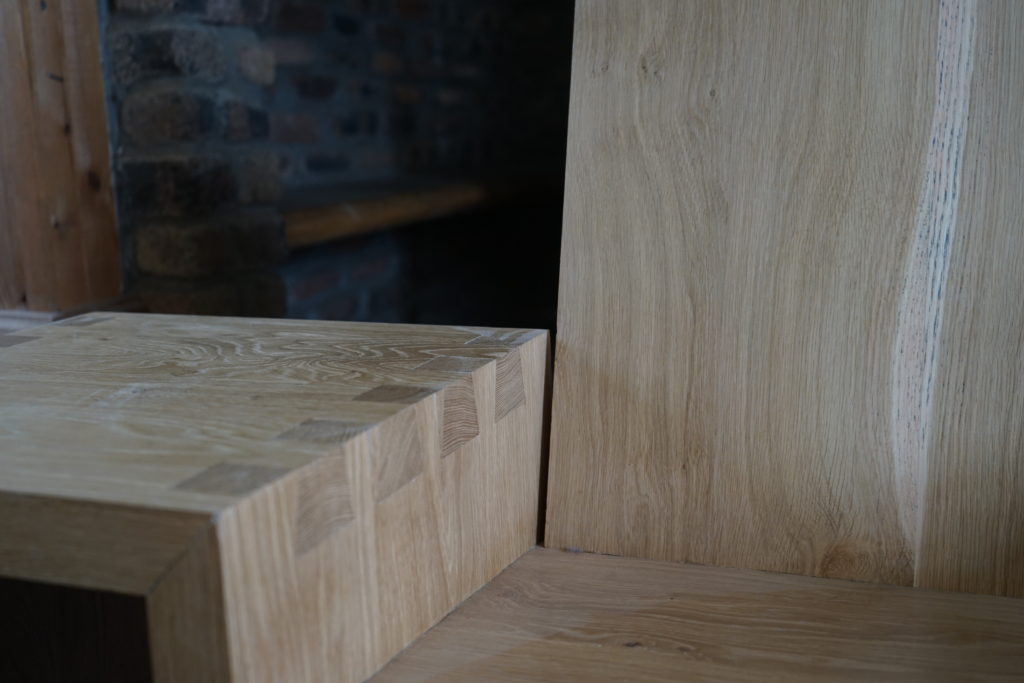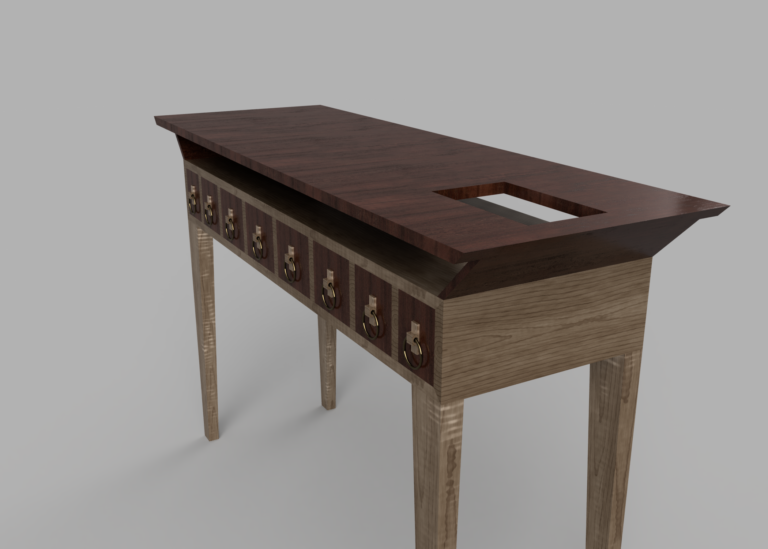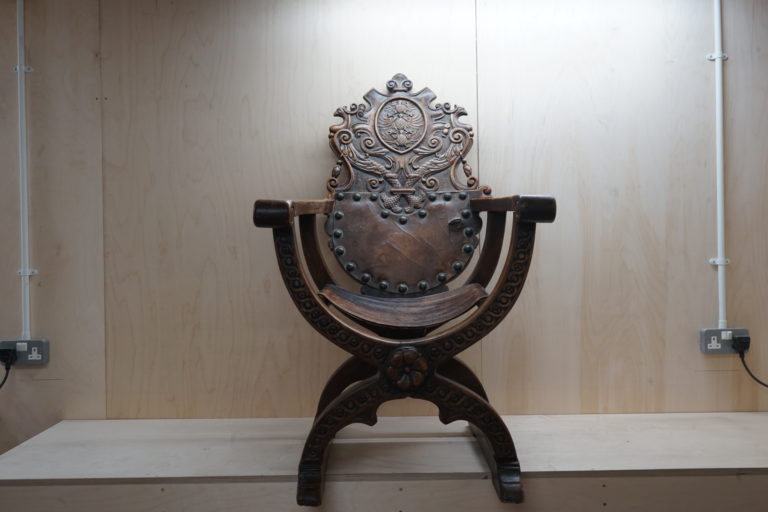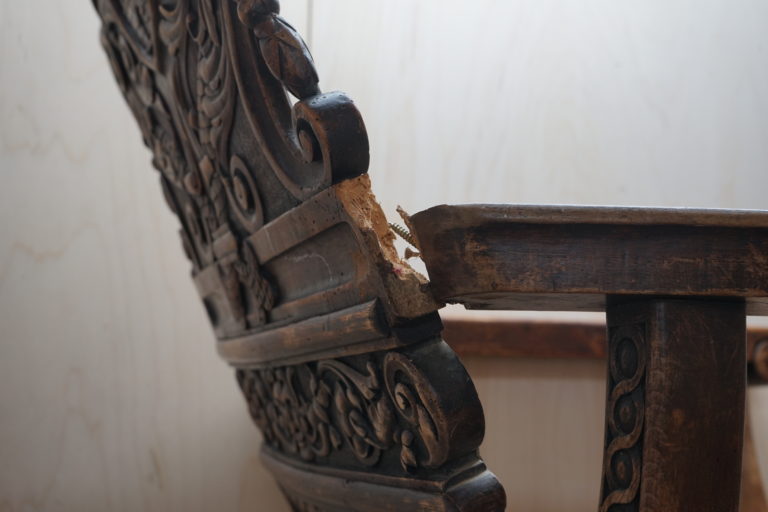
Mastering hand cut joinery is a long process and requires patience and discipline. It is essential to understand how wood reacts, even as a board, to its environment.
Having a good set of hand skills also makes a woodworker, in a lot of occurrences, quicker and more accurate than the machines. Hand tools provide the best fine adjustments.
Joinery is mainly hand cut in our work.
However, the possibilities given by machinery today are amazing and it is important to be able to use them properly. Accurate milling is crucial for a project’s success and some projects do not require the level of craftsmanship given by a hand tools only approach ; being a good machine operator can save precious labour time.
The choice of material is fundamental in the making of a piece of furniture. Every single tree is different, each of them presenting singularities that are reflected on the creation. We choose our materials with care, giving priority to sustainably sourced or reclaimed woods, while selecting the most relevant materials to the project.
Solid wood is a natural product. Unlike the larger furniture factories on the market, we do not allow particle board and MDF in our designs. We prefer to stay as close as possible to the natural state of wood while finding solutions to the technical challenges it can create.
We celebrate the impression of nature, and the thumbprint of the maker in each design, which makes them so singular.
Oak has been our timber of predilection so far. But each project commissioned can be customized to the desire of the client.


Constance Furniture proposes unique pieces, in accordance to the client need, but always with an elaborate design, and a cared for build.
The idea is one of a “total” project. From start to finish. Conception and making do not have to be a dichotomy. The design and the building are indivisible to us, and what makes the cohesion between the idea and the shape.
At the tangency between art and craftmanship, we take inspiration in the Art and Crafts and the Bauhaus philosophy.
The point is to explore the place of furniture in today’s world, and giving value to the object. Bespoke furniture is, to us, a meaningful part in our relation to our possessions and our homes.
Each piece that comes into our care for restoration is different and requires a specific treatment. Depending on the work needed, the appropriate techniques will be applied while respecting as much as possible the integrity and identity of the piece.
While studying at the Sorbonne where I have had the opportunity to study art history, I acquired knowledge and sensibility towards our cultural heritage. The craftsmanship that I acquired, allows me to play a part in furniture and antique conservation and restoration.


The question of restoration raises an essential point of bespoke furniture making. In a society of ever-growing consumerism, it is important to be careful of the way our actions impact the world around us.
Restoration and furniture making both are a different answer to not throwing away furniture, and buying cheap and often, in mass production retailers. To make the choice of purchasing the long lasting, the furniture of a lifetime, and fixing what has been transmitted to us.
Timber is as much as possible sourced locally and therefore, not only purchasing bespoke furniture does support craftsmanship in your country but also supports the local economy.

As a standard, all the pieces are sanded to a 320 (fine) grit.
A variety of finishes can be used depending on the piece. In most of the last realisations a combination of boiled linseed oil and wax has been chosen. As well as simply revealing the grain, it gives the wood a warmth impression and offers a protective layer that, if deteriorated, is easily fixable.
After getting my Art History degree at the Sorbonne Pantheon, I decided to deviate a little for my theoretical studies to start making.
I made the choice of learning woodworking at the Chippendale International School of Furniture. I learnt the craft of fine furniture making and restoration, and was taught how to give life to my own designs.
It only makes sense for me to take advantage of my art history background to create pieces that resonate with my former world, in the shape of functional art.
In addition to manufacturing my own designs, I also take commissions for bespoke pieces.
© All Rights Reserved 2021